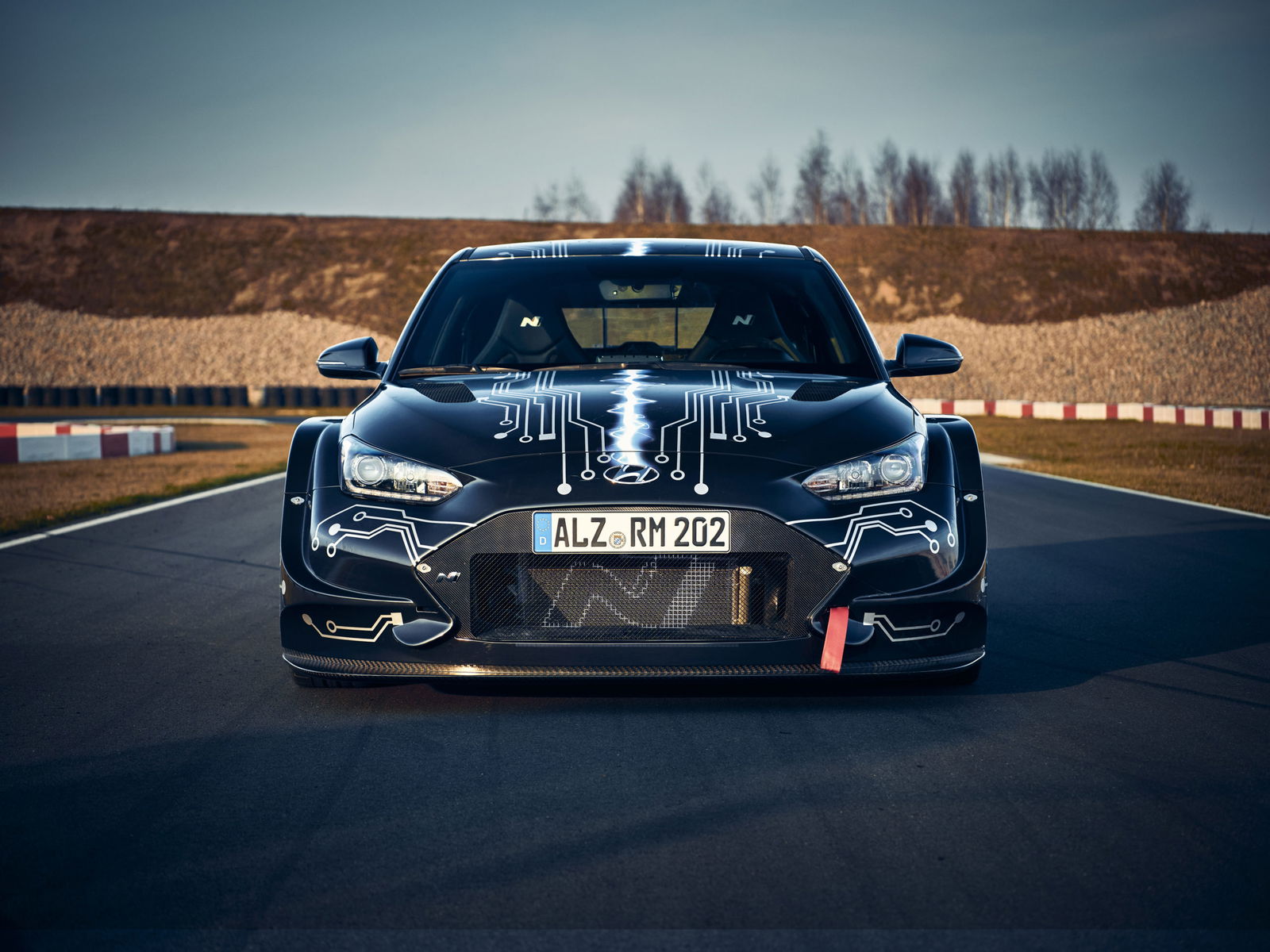
It was a big weekend for Hyundai – unveiling its latest hot hatch and teasing its future electric sports car.
The South Korean brand took the wraps off its updated-for-2021 i30 N hot hatch and then just a day later revealed its latest concept car, the RM20e; a mid-engine, electric prototype.
FEATURE: How Hyundai has earned a performance following
2021 Hyundai i30 N

Featuring a fresh look and some key mechanical upgrades, the new i30 N is due to hit Australian showrooms in early 2021.
The most obvious change is the new-look design, with the company trying to give it a more aggressive look with new LED headlights and daytime running lights, as well as incorporating the brand’s signature ‘cascading grille’.
There’s also new 19-inch alloy wheels, but they aren’t just for show they’re also more than 14kg lighter than the old rims which saves crucial unsprung mass.

But the bigger change is the introduction of an automatic gearbox for the first time. A newly-developed eight-speed wet, dual-clutch transmission (known as N-DCT) is now an option, alongside the existing six-speed manual. That should be a major boost to the i30 N sales, with Australian buyers typically preferring the two-pedal option even in hot hatches.
The N-DCT features three unique driving modes – N Grin Shift, N Power Shift and N Track Sense Shift – which have been designed to get the best from the engine depending on the driving conditions or driver’s preference.

The engine remains the same 2.0-litre four-cylinder turbo petrol unit but has been upgraded with more performance. It now makes 206kW (up from 202kW) and 392Nm of torque (a 39Nm boost), but importantly has also been re-tuned to offer its performance across a wider rev range – particularly lower in the RPM band.
Hyundai has also added bigger front brake rotors, with 360mm discs replacing the out-going model’s 345mm.
Other changes include a new Performance Driving Data System that the company claims will be able to help you improve your driving on-track by analysing your inputs.
Full specifications and pricing for the updated i30 N will be revealed closer to its launch date.
Hyundai RM20e

This is the latest in Hyundai’s on-going ‘Racing Midship’ program that is designed to understand mid-engine dynamics as the company works towards building a genuine sports car.
The RM20e is similar to the RM19 that was built last year, with elements of the Veloster in its styling. But whereas the RM19 was powered by a version of the brand’s TCR 2.0-litre turbo engine, the RM20e gets an all-electric powertrain that’s likely been developed in collaboration with Rimac.
The 800V electric motor and inverter takes performance up several levels for Hyundai, into supercar territory, with 596kW of power and 960Nm of torque. Hyundai claims that the RM20e can launch it from 0-100km/h in less than three seconds and 0-200km/h in 9.8 seconds – on its way to a speed-limited 250km/h.

Albert Biermann, president and head of research and development at Hyundai explained the RM20e is a revolutionary step for the South Korean brand.
“Our new electrified RM20e pushes the proven RM platform forcefully into a new, environmentally-focused decade of the 21st century, stretching the performance envelope of electrification on normal road environments,” he said. “RM20e represents a revolutionary new chapter of electrified performance for the Racing Midship series, and our N engineers continue to garner valuable insights in the arena of zero-emission performance dynamics.”













Discussion about this post